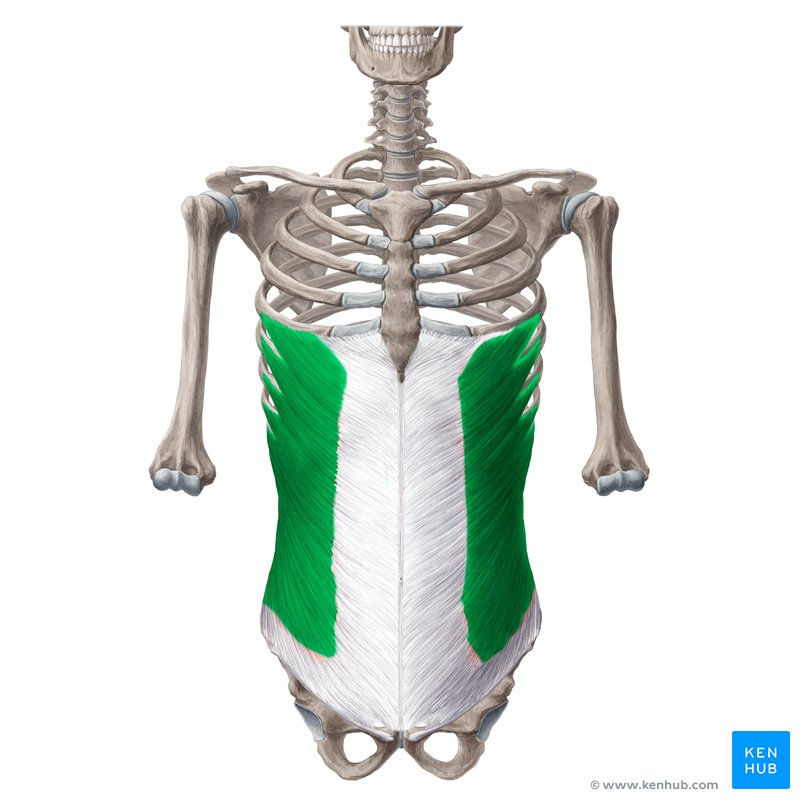External Oblique Muscle Tear: Causes, Symptoms & Recovery with Physio360 Chennai.
- PHYSIO 360

- Jul 16
- 2 min read

INTRODUCTION;
A tear in the external oblique muscle can be severely painful and limiting especially for athletes, fitness enthusiasts, and individuals involved in physical labor. At Physio360 Chennai, we provide targeted physiotherapy for external oblique muscle injuries to reduce pain, improve function, and speed up recovery through expert care and individualized rehab programs.
What is the External Oblique Muscle?
The external oblique is a large, flat muscle located on the sides and front of the abdomen. It plays a crucial role in:
Trunk rotation and side bending
Core stabilization
Supporting movements like twisting, coughing, and lifting
Helping with forced exhalation
Common Causes of External Oblique Muscle Tear.
An external oblique tear often results from:
Sudden twisting or rotational movement (e.g., during golf, tennis, cricket)
Lifting heavy weights with poor form
Direct trauma to the side of the trunk
Overuse during repetitive activities
Weak core muscles or poor postural control
Symptoms to Watch For.
You may have an external oblique tear if you experience:
Sharp pain in the side or front of the lower ribs/abdomen
Pain that worsens with twisting, bending, or deep breathing
Tenderness, swelling, or even visible bruising
Discomfort during core exercises, coughing, or sneezing
Difficulty performing daily activities or sports routines
Diagnosis at Physio360.
At Physio360 Chennai, our trained physiotherapists will:
Take a detailed history and perform a clinical examination
Use special muscle tests to isolate oblique injuries
Suggest ultrasound or MRI if the tear is severe or deep

Physiotherapy Management at Physio360 Chennai
We follow a structured, evidence-based rehab plan tailored to your condition:
🔹 Acute Phase (0–7 Days):
✅ Rest and avoid aggravating movements
✅ Apply ice therapy to control swelling
✅ Use compression or kinesiology taping if needed
✅ Begin gentle breathing and isometric exercises
🔹 Subacute Phase (1–3 Weeks):
✅ Progress to mobility exercises like side stretches and rotations
✅ Manual therapy to reduce tightness and enhance circulation
✅ Start core activation drills (e.g., pelvic tilts, abdominal bracing)
🔹 Strengthening Phase (3–6 Weeks):
✅ Controlled core strengthening (planks, resisted trunk rotations)
✅ Functional movement training for twisting and lifting tasks
✅ Address postural and muscular imbalances
🔹 Return to Activity (6–8 Weeks):
✅ Sports-specific drills and dynamic movement retraining
✅ Emphasis on injury prevention, posture, and core endurance
✅ Education on lifting techniques and exercise form.
Why Physio360 is Your Best Choice for Muscle Tear Rehab
Expert physiotherapists skilled in musculoskeletal and sports injury rehab
Conveniently located in Gerugambakkam, Chennai, near Porur, Moulivakkam, and Kolapakkam
Root cause analysis to prevent recurrence
Holistic approach combining manual therapy, core rehab, and education
Affordable, transparent treatment plans with extended hours

Regain Your Strength with Physio360 Chennai
Ignoring an external oblique tear may lead to chronic core weakness, recurring pain, and even functional limitations. Timely physiotherapy is key to a full recovery.
REFERENCE AND RESEARCH ARTICLE.
1.Uncommon external abdominal oblique muscle strain in a professional soccer player: A case reporthttps://www.researchgate.net/publication/266381914_Uncommon_external_abdominal_oblique_muscle_strain_in_a_professional_soccer_player_A_case_report.




Comments